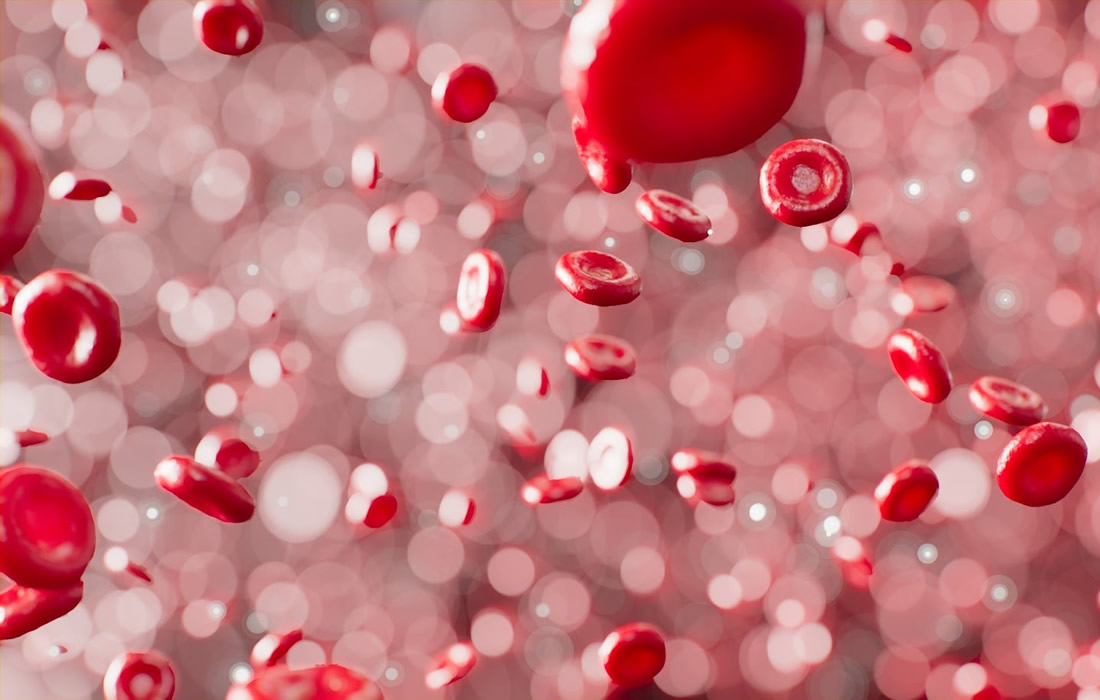Regenerative Medicine News and General Information
Red Blood Cell Particles Could Potentially Treat Atherosclerosis
Atherosclerosis is a disease in which fat, cholesterol, and other substances build up inside artery walls. This can lead to plaque formation, which can block arteries and cause heart attacks and strokes. Immune cells play a key role in cleaning the blood, by interacting with red blood cell extracellular vesicles (RBCEVs), which are nano-sized particles released by red blood cells.
Macrophages are immune cells which detect and clear pathogens and dead cells, and secrete molecules to activate other immune cells. To understand what happens to macrophages that are exposed to a high amount of RBCEVs and whether they prove to be beneficial in treating atherosclerosis, a multi-institutional team examined the mechanisms of how RBCEVs are internalized by macrophages and analyzed the consequent changes.
The study demonstrated that the uptake of RBCEVs by macrophages was highly efficient, as the particles induced multiple changes in the macrophages. Following exposure to RBCEVs, the macrophages had decreased levels of proteins that promote inflammation, suggesting the potential use of RBCEVs to alleviate conditions associated with excessive inflammation. The macrophages also produced higher levels of an enzyme which protects cells against oxidative damage — commonly observed in inflammatory and cardiovascular diseases. In addition, the RBCEVs led to higher resistance to lipid uptake in the macrophages, reducing fat deposition — which characterizes the condition of atherosclerosis.
Asst Prof Minh Le said, “We have known for a while that RBCEVs tend to go to macrophages when they enter the body, but we did not realize some of the implications until now. The properties of RBCEVs that we have uncovered here are desirable for treating atherosclerosis and possibly other inflammatory diseases.”
The team hopes to leverage their improved understanding to manipulate RBCEV uptake by macrophages and thus adjust the distribution of RBCEVs to different tissues in the body. The team also plans to further explore the therapeutic potential of RBCEVs by combining their natural beneficial properties with exogenously loaded drugs designed to treat inflammatory conditions.
Sources:
Thach Tuan Pham, Anh Hong Le, Cong Phi Dang, Suet Yen Chong, Dang Vinh Do, Boya Peng, Migara Kavishka Jayasinghe, Hong Boon Ong, Dong Van Hoang, Roma Anne Louise, Yuin‐Han Loh, Han Wei Hou, Jiong‐Wei Wang, Minh TN Le. Endocytosis of red blood cell extracellular vesicles by macrophages leads to cytoplasmic heme release and prevents foam cell formation in atherosclerosis. Journal of Extracellular Vesicles, 2023; 12 (8) DOI: 10.1002/jev2.12354
National University of Singapore, Yong Loo Lin School of Medicine. “Red blood cell particles reduce fat deposition in arteries, potentially treating atherosclerosis: Nano-sized particles released by red blood cells reduce inflammation and fat deposition in immune cells, potentially paving the way for new methods of treating atherosclerosis.” ScienceDaily. ScienceDaily, 10 August 2023. <www.sciencedaily.com/releases/2023/08/230810110353.htm>.
Images from:
Photo by ANIRUDH
https://unsplash.com/photos/UiwUtEqROEs

